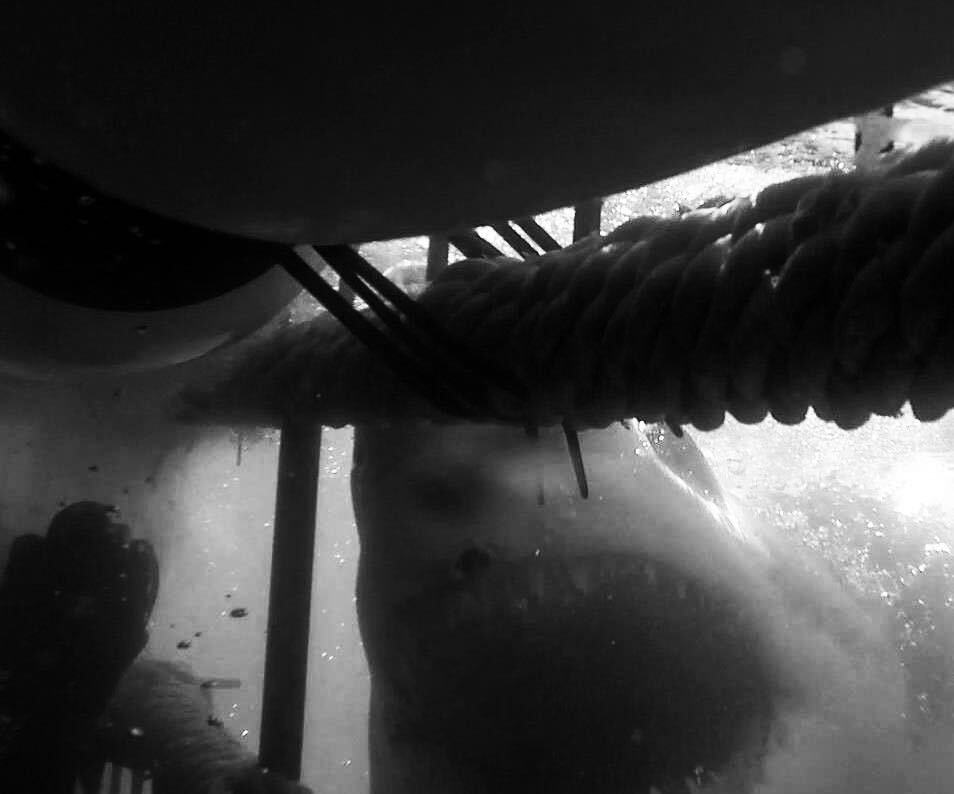Baaaaa-dum.
Baaaaa-dum.
Ba-dum, ba-dum, ba-dum….
The movie Jaws was released in 1975, and it has terrified us ever since. Even though the special effects have aged not-so-gracefully, the attraction to the danger of a monstrous, marauding Great White shark in our local swimming areas has stuck with anyone who has ever seen the movie. The classic cinema hit has remained popular and has survived for almost 50 years, thanks to its strengths in storytelling.
The gore.
The suspense.
The sequels.
So given that 99% of the world has most likely seen the movie at some point, why do people continue to be lured into the dark and frigid parts of the planet’s oceans to get a closer look at the Great White?
What would make you want to go into the cage that goes into the water where the shark is?
The Impetus
Perhaps it is a wish to see our monsters up close that lure us into the depths where the Great White cruises. Yes, there is a sense of terror there, but there is also a hint of wonder. Sharks are amazing creatures that have been around for 450 million years
That number alone should entice you into donning a wet suit and some goggles to get a closer look at this magnificent fish.
At some point, the fear of the Great White was replaced with a fascination about how they operate. While science has made their study more popular, and conservation efforts have made the need for sharks more apparent, television programs like Shark Week have turned the thoughts of the public from deathly afraid of killer sharks to genuinely interested in the part they play in our shared world.
And where better to get an up-close view than in the assuredly sage confines of a cage in the ocean?
The Experience
Entering into the water to see a Great White shark up close is probably the most fearful point of the experience. The “what ifs” have your mind and imagination working overtime to talk yourself out of entering the cage, but once you’re inside and the door is closed, you begin your wait to see the Tiburon Blanco face to face. Or dead, soulless eyes to goggles, to be more accurate.
When they first cruise by, it is a hair-raising feeling. However, you quickly realize that they are not people-crazed assassins of the ocean, but just giant fish that do what a fish does. It swims, it eats, it makes little fish, and it tries to avoid being dinner for a bigger fish, or mammal.
At that point, you relax and realize how lucky you are to be able to see such a rare site for so many people. Then you realize that the water is really cold. And then you remember that your guide told you to not pee inside your wet suit. So, you quickly decide to get out of the cage.
The Ethics
Many people feel that the touristy aspect of shark cage diving is a little out of touch with environmental and animal respect aspects. In order to bring sharks to the area where the boat and cage are located, the water is usually chummed with blood and other things. Some are concerned that making the sharks accustomed to boats being areas of blood-tinged water could be bad for people doing non-shark-associated adventures.
It could be argued however that any exposure of the average adventurous person to an animal that is both awe-inspiring and terrifying, could be a good thing. Fear or fascination gives way to interest and concern when back on dry land.
To expose people to the Great White through the mesh of a cage, safely within the environment of the shark, is to promote a desire to protect an animal that has stirred such primal emotions concerning the potential of death, and reminding us of the life we live.
To protect the Great White, we should encourage an understanding that can only be truly grasped when we see the animal’s potential to inspire.
The only fear we should allow to deter our intentions toward the Great White is the fear of having them disappear from the seas through a lack of understanding and unknowing of the creatures they are.
Photo courtesy of the author.





